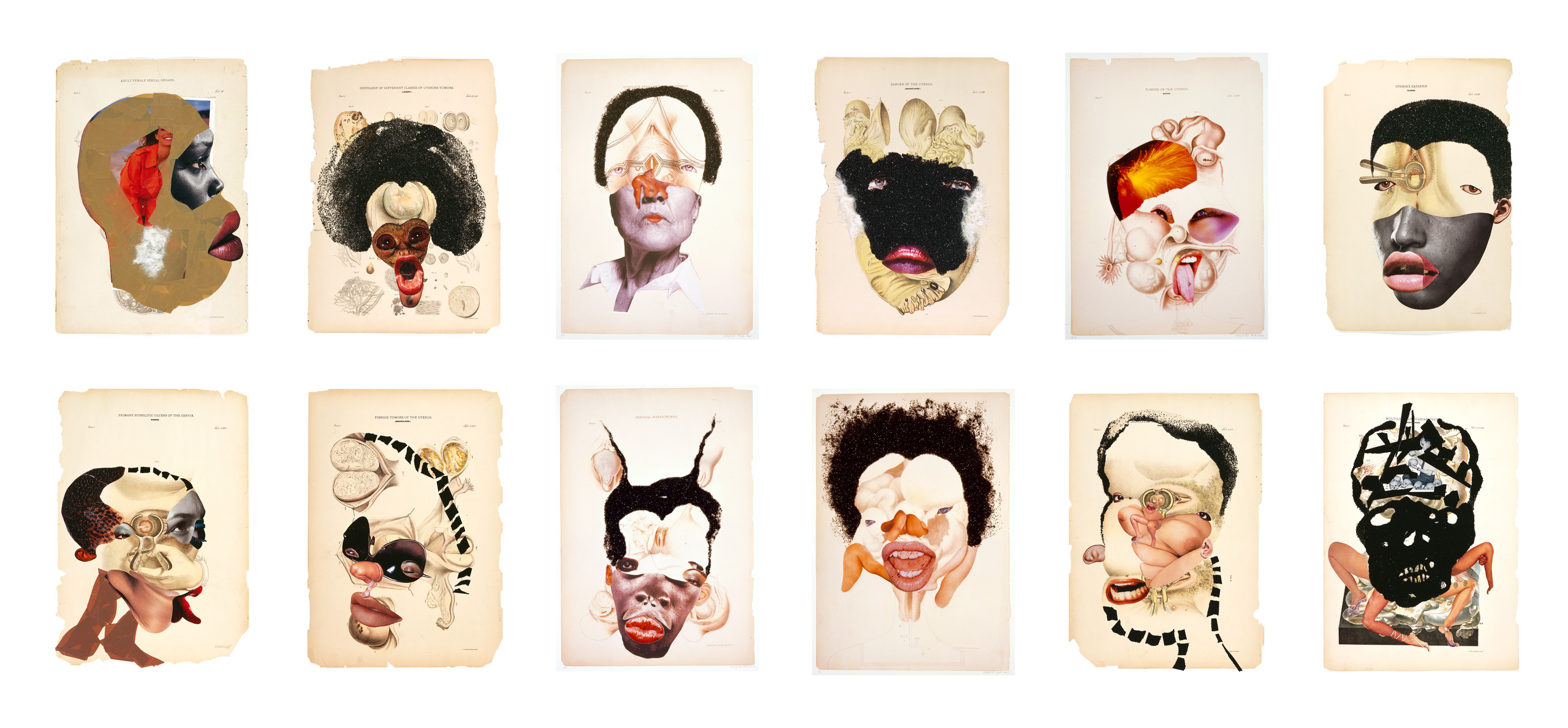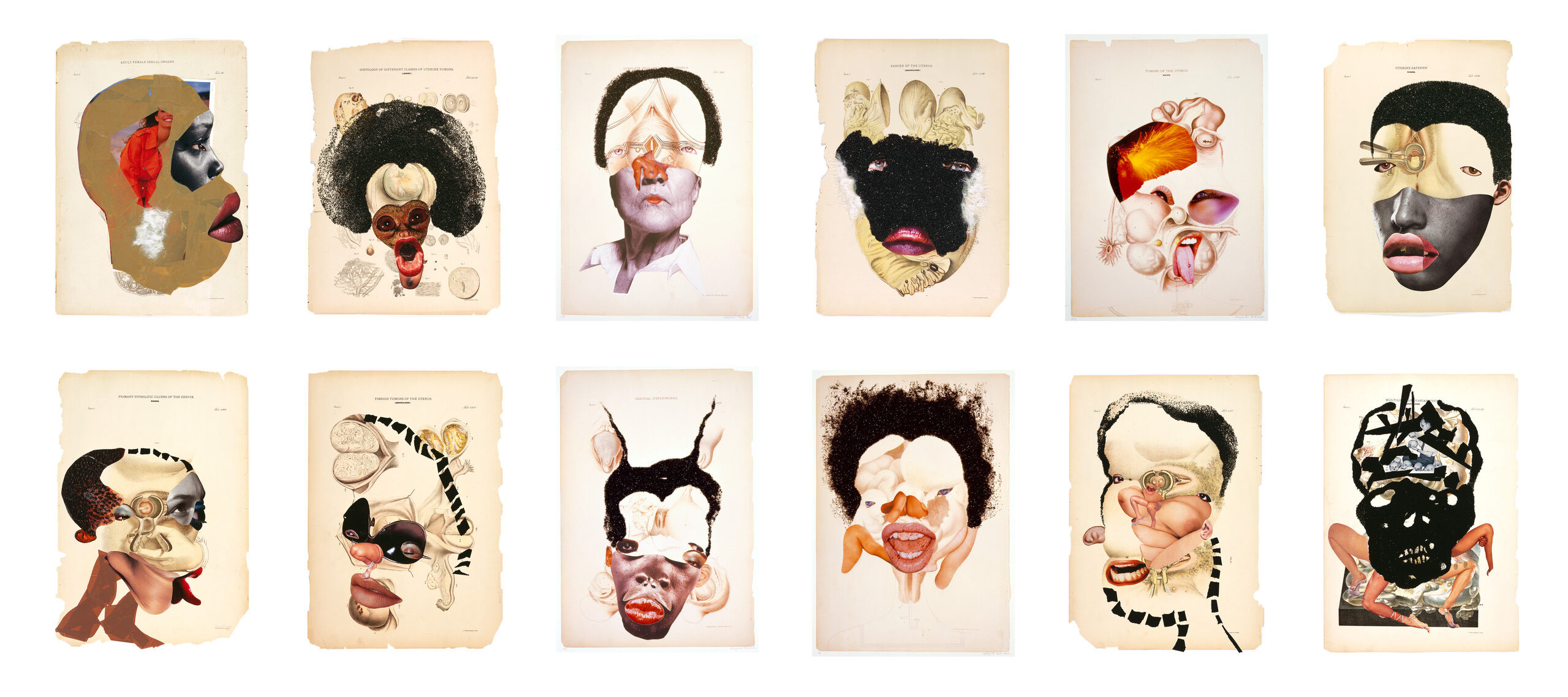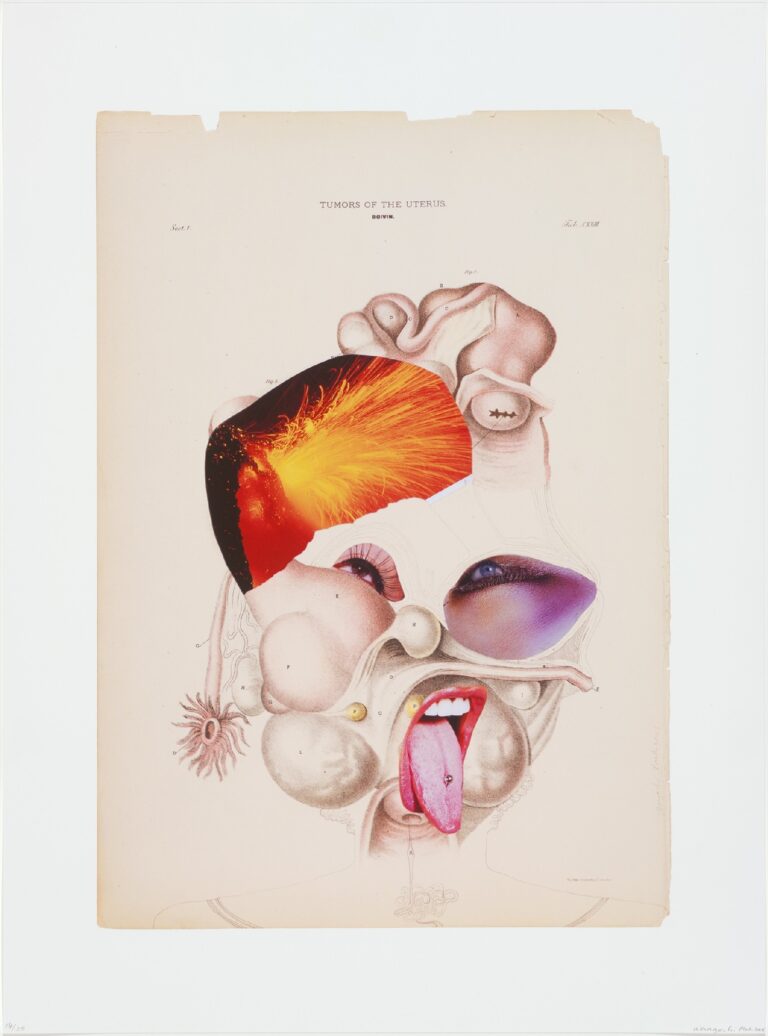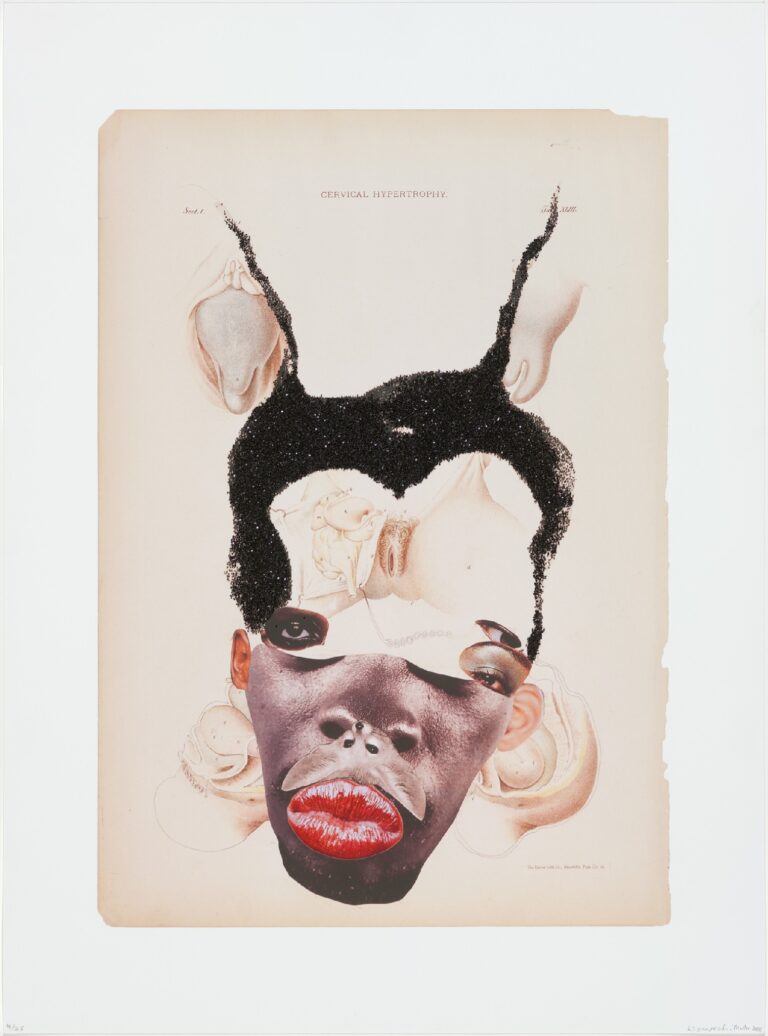On view at the American University Museum at the Katzen Arts Center from January 29 through May 22, 2022, Positive Fragmentation: From the Collections of Jordan D. Schnitzer and His Family Foundation includes more than 100 works by 21 contemporary artists who use fragmentation both stylistically and conceptually. Through their prints, artists including Betye Saar, Wendy Red Star, Lorna Simpson, Jenny Holzer, Louise Bourgeois, Julie Mehretu, Swoon, Mickalene Thomas, and Sarah Morris question the status quo and suggest new perspectives.

Representing the human body has been held historically as the highest achievement for artists. When rules for depicting the human form were challenged by artists including Pablo Picasso and Willem de Kooning in the first half of the 20th century, the resulting fragmented forms often reduced women’s bodies to sexualized elements: breasts, vaginas, and buttocks. The dissonance of not conforming to a white, cis-male norm, to be considered Other, is in itself a “collage experience,” as Lucy Lippard described in her 1980 essay “Issue and Taboo.” In Positive Fragmentation, this observation is visualized most precisely by Wangechi Mutu (b. 1972) in her 12-print series Histology of the Different Classes of Uterine Tumors (2006).
Mutu is known for her collages of Black female hybrid figures. She draws her source material from publications—whether pornographic, fashion, or motorcycle magazines, those exploring world cultures such as National Geographic, or medical journals. Mutu has expressed, “As a woman of color, how I’m represented in these publications is of absolute relevance and importance to me because it tells me where I stand in that particular culture.”
For Histology of the Different Classes of Uterine Tumors, Mutu collaged onto the pages of Victorian-era medical illustrations of female reproductive system diseases to produce portrait busts of Black women, which she embellished with hair, glitter, and/or rabbit fur. Some of the busts are shown in profile, but most of them address the viewer directly. By activating an interplay between repugnance and seduction, Mutu seeks to make visible and approachable inequities at the intersection of race and gender. Elaborating on this double effect, the artist notes that
“the Black female body has been violated and revered in very specific ways by the outsider, Europeans, especially. The issues that pertain to race: pathologizing the Black mind, exoticizing and fearing the Black body, objectifying the body as a specimen, or a sexual machine, or a work animal, or relating the Black body to non-human species as a way to justify cruelty…The body is put to work, devoured, tortured, broken, mutilated, and then prepared for display as an artifact, a totem, a specimen. Even in this state of containment and capture, our body is valued and worshipped, yet feared and reviled.”
Mutu demonstrates how the original illustrations, ripe with the pseudoscience of colonialist thought, serve as the basis for contemporary constructions of gender and race. Importantly, however, Mutu gives each face a mouth, presumably so that it can speak for itself.
Check out Positive Fragmentation at the American University Museum, Friday–Sunday, 11 a.m.–4 p.m. Free. No reservations required. Please visit their website for current visitor information.


